
地理可视化与空间分析(英文)(Journal of Geovisualization and Spatial Analysis)(国际刊号) 知网目次
- 主管单位:
- 主办单位:
兰州交通大学
- 国际刊号:
2509-8810;EISSN 2509-8829
- 国内刊号:
- 学科分类:
- 字数:
-
- 有无基金:
- 周期:
国际号刊-半年刊
- 特殊属性:
外文期刊
- 电话:
0931-4957211;0931-4957227(官网电话)
- 邮箱:
Jgsa2017@126.com(官网邮箱)
- 复合因子:
0
- 综合因子:
0
- 收录:
知网目次
- 级别:
期刊简介
《地理可视化与空间分析》期刊已被查看: 次
更新频次
单位占比
一作占比
投稿指南
1、该刊只有国际刊号。
2、投稿方式:在线投稿。
3、官网网址:https://link.springer.com/journal/41651
4、投稿系统:https://www.editorialmanager.com/jgsa
5、主办单位网址:
https://cdxy.lzjtu.edu.cn/info/3259/4296.htm
(兰州交通大学测绘与地理信息学院)
6、官网邮箱:Jgsa2017@126.com
7、官网电话:0931-4957211;0931-4957227
8、出刊日期:半年刊,一年出版2期。
2024年5月15日星期三
《地理可视化与空间分析(英文)》期刊简介
(Journal of Geovisualization and Spatial Analysis)
【兰州交通大学测绘与地理信息学院官网信息】
2019-12-02 09:07:17来源: 浏览次数:2624
Journal of Geovisualization and Spatial Analysis介绍
国际英文期刊Journal of Geovisualization and Spatial Analysis简称JGSA,是由兰州交通大学主办,国际著名出版公司Springer出版的英文地学期刊。JGSA由闫浩文教授发起创办,美国University of Nebraska at Omaha地图学专家Michael Peterson教授、香港理工大学地理信息专家李志林教授作为共同主编,40余名来自北美、欧洲、亚太等地区国际知名专家作为编辑委员会的知名地学期刊。JGSA旨在提供一个共享、先进、创新的地理空间与可视化的理论、方法、应用的交流平台。持续跟踪制图学、空间分析与可视化等国际前沿地先进技术。定期发布地图学、地理信息科学/系统、遥感、摄影测量、全球定位系统等不同领域如等方面的高水平研究论文、报告与短评。
JGSA于2016年6月正式在兰州交通大学揭牌成立,同时,期刊成立了专门的杂志编辑部,编辑部挂靠在测绘与地理信息学院,周亮博士担任编辑部主任。目前期刊每年两期,2019年开始期刊以季刊形式出版,每年刊发4期,每期5-6篇文章。北京时间2017年7月4日,JGSA首刊在Springer正式在线出版。
期刊将竭诚为大家提供一个良好的交流学习平台。希望相关专业的研究学者能踊跃投稿,将优秀的论文成果谱写在祖国的大地上。也期望大家能给予新的期刊更多的关注、支持与批评。
JGSA网页:http://www.springer.com/journal/41651
投稿入口:http://www.springer.com/journal/41651?IFA
编辑部地址/Add: 兰州市安宁区安宁西路88号,兰州交通大学笃行楼B座1402
88 West Anning Rd. Lanzhou, 730070, China.
电话/Tel: 86-0931-4957211, 86-0931-4957227
Email: Jgsa2017@126.com
Publisher: Springer International Publishing AG, Gewerbestrasse 11, 6330
Cham, Switzerland
ISSN (print version): 2509-8810
ISSN (Electronic version): 2509-8829
The Journal of Geovisualization and Spatial Analysis [JGSA] provides an advanced forum for theories and applications of geospatial analysis and visualization. The journal serves diverse fields such as cartography, geographic information science/systems, remote sensing, location-based services, photogrammetry, geology, etc. It publishes high-quality research papers, reviews, and communications. While there is no restriction on the length of the papers, the standard length is between 3000-5000 words.
JGSA publishes papers on subjects which include visualization theory and technology in real and virtual environments, cartography and cartographic communication, geovisualization and analysis of dynamic phenomena (e.g., movement data and change detection), multiscale and/or higher dimensional visualization of geospatial data, applications of geovisualization such as in geology, landscape design, decision-making, disaster response analysis of social interactions and education, human recognition of geovisualization, geovisualization using various mobile devices (e.g., smart phones, PDAs, tablets and GPS), geovisualization in gaming technology for simulation and geospatial education, Theory and applications of spatial analysis and spatial relations, theory and applications of geo-computation and geo-statistics, spatial data handling, spatial data mining and decision support systems, geo-telematics, spatial information infrastructures and applications of geo-analysis and geovisualization technology (all possible domains).
《地理可视化与空间分析(英文)》投稿指南
(Journal of Geovisualization and Spatial Analysis)
【官网信息】
Journal of Geovisualization and Spatial Analysis
Submission guidelines
Instruction for Authors
Manuscript Submission
Submission of a manuscript implies: that the work described has not been published before; that it is not under consideration for publication anywhere else; that its publication has been approved by all co-authors, if any, as well as by the responsible authorities – tacitly or explicitly – at the institute where the work has been carried out. The publisher will not be held legally responsible should there be any claims for compensation.
Permissions
Authors wishing to include figures, tables, or text passages that have already been published elsewhere are required to obtain permission from the copyright owner(s) for both the print and online format and to include evidence that such permission has been granted when submitting their papers. Any material received without such evidence will be assumed to originate from the authors.
Online Submission
Please follow the hyperlink “Submit manuscript” on the right and upload all of your manuscript files following the instructions given on the screen.
Please ensure you provide all relevant editable source files. Failing to submit these source files might cause unnecessary delays in the review and production process.
Title Page
Please make sure your title page contains the following information.
Title
The title should be concise and informative.
Author information
The name(s) of the author(s)
The affiliation(s) of the author(s), i.e. institution, (department), city, (state), country
A clear indication and an active e-mail address of the corresponding author
If available, the 16-digit ORCID of the author(s)
If address information is provided with the affiliation(s) it will also be published.
For authors that are (temporarily) unaffiliated we will only capture their city and country of residence, not their e-mail address unless specifically requested.
Abstract
Please provide an abstract of 150 to 250 words. The abstract should not contain any undefined abbreviations or unspecified references.
For life science journals only (when applicable)
Trial registration number and date of registration
Trial registration number, date of registration followed by “retrospectively registered”
Keywords
Please provide 4 to 6 keywords which can be used for indexing purposes.
Declarations
All manuscripts must contain the following sections under the heading 'Declarations'.
If any of the sections are not relevant to your manuscript, please include the heading and write 'Not applicable' for that section.
To be used for all articles, including articles with biological applications
Funding (information that explains whether and by whom the research was supported)
Conflicts of interest/Competing interests (include appropriate disclosures)
Availability of data and material (data transparency)
Code availability (software application or custom code)
Authors' contributions (optional: please review the submission guidelines from the journal whether statements are mandatory)
Additional declarations for articles in life science journals that report the results of studies involving humans and/or animals
Ethics approval (include appropriate approvals or waivers)
Consent to participate (include appropriate statements)
Consent for publication (include appropriate statements)
Please see the relevant sections in the submission guidelines for further information as well as various examples of wording. Please revise/customize the sample statements according to your own needs.
Text
Text Formatting
Manuscripts should be submitted in Word.
Use a normal, plain font (e.g., 10-point Times Roman) for text.
Use italics for emphasis.
Use the automatic page numbering function to number the pages.
Do not use field functions.
Use tab stops or other commands for indents, not the space bar.
Use the table function, not spreadsheets, to make tables.
Use the equation editor or MathType for equations.
Save your file in docx format (Word 2007 or higher) or doc format (older Word versions).
Manuscripts with mathematical content can also be submitted in LaTeX. We recommend using Springer Nature’s LaTeX template.
Headings
Please use no more than three levels of displayed headings.
Abbreviations
Abbreviations should be defined at first mention and used consistently thereafter.
Footnotes
Footnotes can be used to give additional information, which may include the citation of a reference included in the reference list. They should not consist solely of a reference citation, and they should never include the bibliographic details of a reference. They should also not contain any figures or tables.
Footnotes to the text are numbered consecutively; those to tables should be indicated by superscript lower-case letters (or asterisks for significance values and other statistical data). Footnotes to the title or the authors of the article are not given reference symbols.
Always use footnotes instead of endnotes.
Acknowledgments
Acknowledgments of people, grants, funds, etc. should be placed in a separate section on the title page. The names of funding organizations should be written in full.
……
更多详情:
https://link.springer.com/journal/41651/submission-guidelines
上一篇:云南文物(内刊)下一篇:协同智能制造(英文)(IET Collaborative Intelligent Manufacturing)(国际刊号)
《地理可视化与空间分析》同类自动化|计算机期刊
-
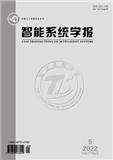
智能系统学报
北核,CSCD,科核,武A-,高T2,高T3
CN中文-双月刊影响因子3.06
-
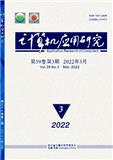
计算机应用研究
北核,科核,CSCD扩,武A,高T3
CN中文-月刊影响因子2.277
-
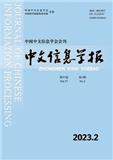
中文信息学报
北核,CSCD,科核,武A-,高T1
CN中文-月刊影响因子3.09
-
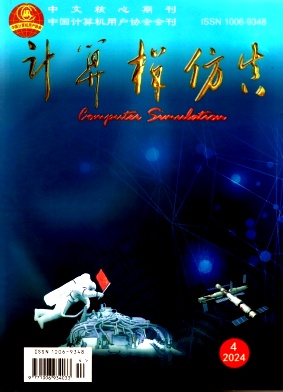
计算机仿真
科核,高T2,高T3,武B+
CN中文-月刊影响因子0.859
-
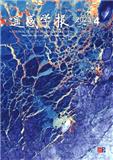
遥感学报
北核,CSCD,科核,武A+,高T1,EI(中国2024)
CN中文-月刊影响因子4.509
-

电子政务
C刊,北核,AMI核心,武A
CN中文-月刊影响因子7.278
-
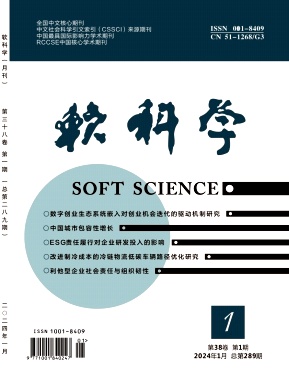
软科学
C刊,北核,科核,武A,AMI扩
CN中文-月刊影响因子4.84
-
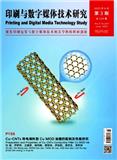
印刷与数字媒体技术研究(原:数字印刷;中国印刷与包装研究;中国印刷物资商情)
北核
CN中文-双月刊影响因子0.753
常见问题
-
地理可视化与空间分析杂志社官网、联系方式是什么?
地理可视化与空间分析杂志社官网:https://link.springer.com/journal/41651
投稿网址:https://www.editorialmanager.com/jgsa联系电话:0931-4957211;0931-4957227(官网电话)
投稿邮箱:Jgsa2017@126.com(官网邮箱) -
地理可视化与空间分析杂志是核心期刊么?
地理可视化与空间分析不是核心期刊,级别是:, 是:自动化|计算机分类下的知网目次收录的期刊。
-
请问你们是地理可视化与空间分析杂志社吗?
我们不是《地理可视化与空间分析》杂志社。本站主要从事期刊信息展示与期刊推荐,不是任何杂志官网,直投稿件请联系杂志社。本站仅提供免费的学术指导、论文辅导、期刊投稿信息整理收集服务。
-
你们指导服务后可以保证文章被发表吗?
期刊发表的成功与否,主要取决于文章内容的质量。编辑老师会根据研究领域、创新性等多因素进行考量。我们会帮助您理解期刊的发表要求,助力提升发表几率,从而增加发表的机会。
-
晋级论文能否在报纸上发表?
在学术界,论文的发表往往被视为研究者职业发展的重要一环。晋级论文,即为了获得更高职称或学术地位而撰写的学术论文,通常需在专业期刊上发表。然而,许多人可能会问
